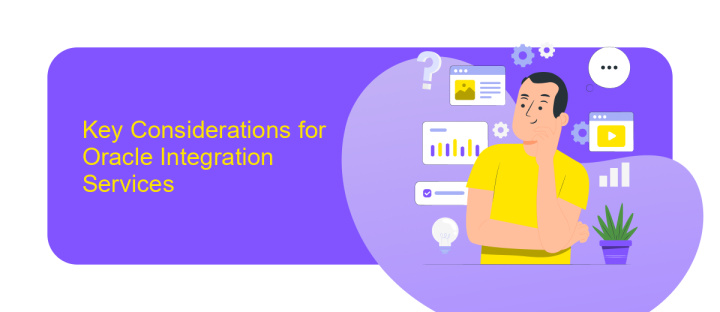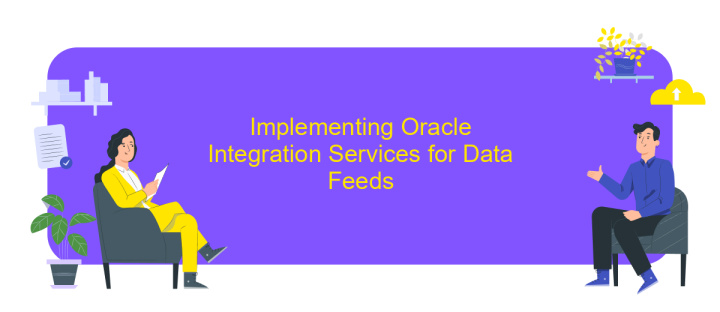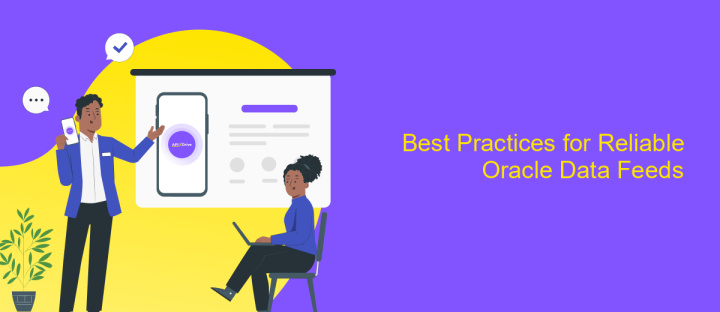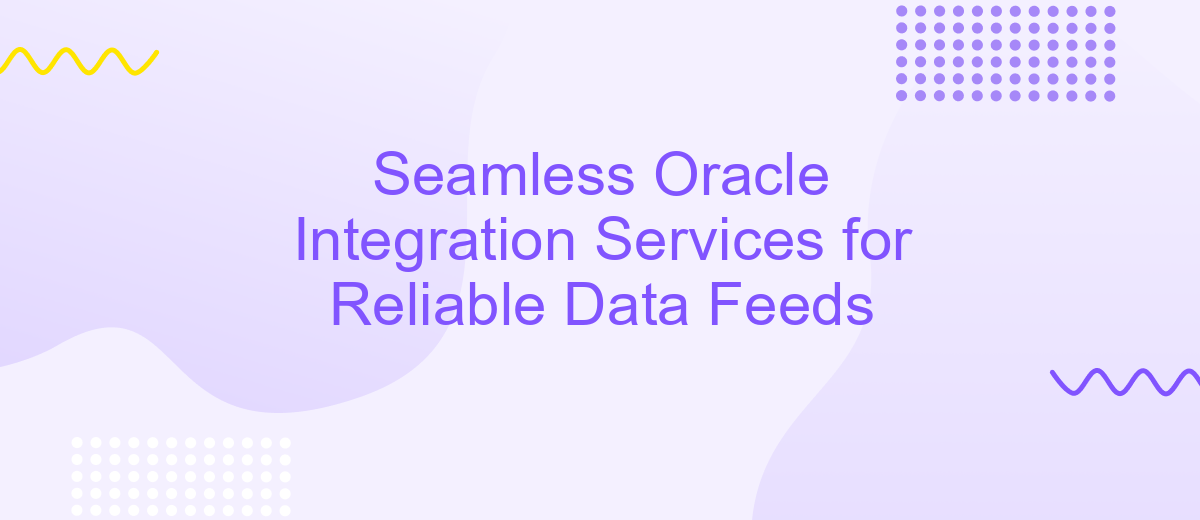Seamless Oracle Integration Services for Reliable Data Feeds
In today's rapidly evolving digital landscape, businesses demand robust and efficient data management solutions to stay competitive. Seamless Oracle Integration Services offer a reliable way to streamline data feeds, ensuring accuracy and consistency across platforms. By leveraging Oracle's advanced capabilities, organizations can optimize their data workflows, enhance decision-making processes, and drive innovation. Discover how these integration services can transform your data management strategies for sustained success.
Understanding the Need for Seamless Oracle Integration
In today's fast-paced business environment, organizations rely heavily on data-driven decision-making. Oracle, as a leading database management system, plays a crucial role in handling vast amounts of data efficiently. However, integrating Oracle with other systems can often become a complex and time-consuming task. Seamless Oracle integration is essential to ensure that data flows smoothly across various platforms, enabling organizations to maintain data integrity and enhance operational efficiency.
- Reduces manual data entry errors by automating data transfer processes.
- Facilitates real-time data synchronization, ensuring up-to-date information across systems.
- Enhances collaboration between departments by providing a unified view of data.
- Improves decision-making capabilities by providing accurate and timely data insights.
- Increases operational efficiency by streamlining workflows and reducing redundancy.
By understanding the need for seamless Oracle integration, businesses can unlock the full potential of their data assets. It allows for a more agile and responsive organizational structure, where information is readily available to those who need it most. This not only supports strategic initiatives but also provides a competitive edge in an increasingly data-driven world.
Key Considerations for Oracle Integration Services

When implementing Oracle Integration Services, it's crucial to evaluate the specific data requirements and workflows of your organization. Understanding the data flow, volume, and transformation needs will guide the configuration of your integration services. Selecting tools that offer flexibility and scalability is essential to adapt to evolving business needs. ApiX-Drive, for example, provides a platform that simplifies the integration process, allowing seamless data transfer between Oracle systems and other applications. This tool can be particularly useful for organizations looking to streamline their data feeds without extensive coding or technical expertise.
Security and compliance are also key considerations in Oracle Integration Services. Ensuring that data is encrypted during transmission and storage helps protect sensitive information. It's important to choose integration solutions that comply with industry standards and regulations, such as GDPR or HIPAA, depending on your sector. Regularly updating and auditing your integration processes can prevent potential vulnerabilities. By prioritizing these considerations, organizations can achieve reliable and secure data integrations, enhancing overall operational efficiency and decision-making capabilities.
Implementing Oracle Integration Services for Data Feeds

Implementing Oracle Integration Services for data feeds involves a systematic approach to ensure seamless data flow across systems. The process begins with understanding the specific requirements and data formats involved. Establishing a robust integration architecture is crucial, as it lays the foundation for efficient data exchange. Oracle Integration Cloud (OIC) serves as a powerful tool, offering pre-built adapters and connectors to facilitate this integration.
- Identify the data sources and destinations, ensuring compatibility with Oracle systems.
- Configure Oracle Integration Cloud to establish secure connections with identified endpoints.
- Utilize Oracle's pre-built adapters to streamline the integration process, reducing manual effort.
- Implement data mapping and transformation rules to maintain data integrity and consistency.
- Test the integration thoroughly to identify and resolve any potential issues before deployment.
By following these steps, organizations can achieve a reliable and efficient data feed integration using Oracle services. Continuous monitoring and optimization are essential to adapt to changing data requirements and ensure ongoing performance. Leveraging Oracle's robust integration capabilities, businesses can enhance their data management strategies, leading to improved decision-making and operational efficiency.
Best Practices for Reliable Oracle Data Feeds

Ensuring reliable data feeds from Oracle systems necessitates a comprehensive approach that encompasses both technical and procedural elements. A robust integration strategy is crucial, focusing on seamless connectivity and efficient data handling processes. This approach minimizes disruptions and enhances data accuracy.
Implementing a proactive monitoring system is essential to identify potential issues before they escalate. Regularly auditing data flows and system performance can prevent data bottlenecks and ensure that feeds remain consistent and reliable. This proactive stance is vital for maintaining data integrity across various applications.
- Utilize Oracle's built-in tools for data validation to ensure data accuracy.
- Schedule regular backups to protect against data loss in case of system failures.
- Implement robust security measures to safeguard data during transmission.
- Optimize data queries to improve feed performance and reduce latency.
Adopting these best practices not only enhances the reliability of Oracle data feeds but also supports the overall efficiency of business operations. By prioritizing data integrity and system performance, organizations can ensure that their data-driven decisions are based on accurate and timely information.
Future Trends in Oracle Integration
As businesses increasingly rely on digital ecosystems, the future of Oracle integration is poised to embrace more advanced automation and AI-driven solutions. These innovations will enhance the ability to seamlessly connect disparate systems, ensuring that data flows smoothly across platforms. With the rise of IoT and big data, Oracle integration services will need to support a broader range of data types and sources, making scalability and flexibility crucial. Future trends will likely focus on real-time data processing and predictive analytics, enabling organizations to make informed decisions swiftly.
In this evolving landscape, tools like ApiX-Drive are set to play a pivotal role by simplifying the integration process. By offering a user-friendly interface for connecting various applications and services, ApiX-Drive enables businesses to automate workflows without extensive technical expertise. This aligns with the trend of empowering non-technical users to manage integrations efficiently. As security concerns grow, Oracle integration strategies will also prioritize robust data protection measures, ensuring that sensitive information remains secure throughout its lifecycle.
FAQ
What is Seamless Oracle Integration?
How can seamless integration benefit my business?
What challenges might I face during Oracle integration?
What tools can assist with Oracle integration?
How do I ensure data security during integration?
Do you want to achieve your goals in business, career and life faster and better? Do it with ApiX-Drive – a tool that will remove a significant part of the routine from workflows and free up additional time to achieve your goals. Test the capabilities of Apix-Drive for free – see for yourself the effectiveness of the tool.

